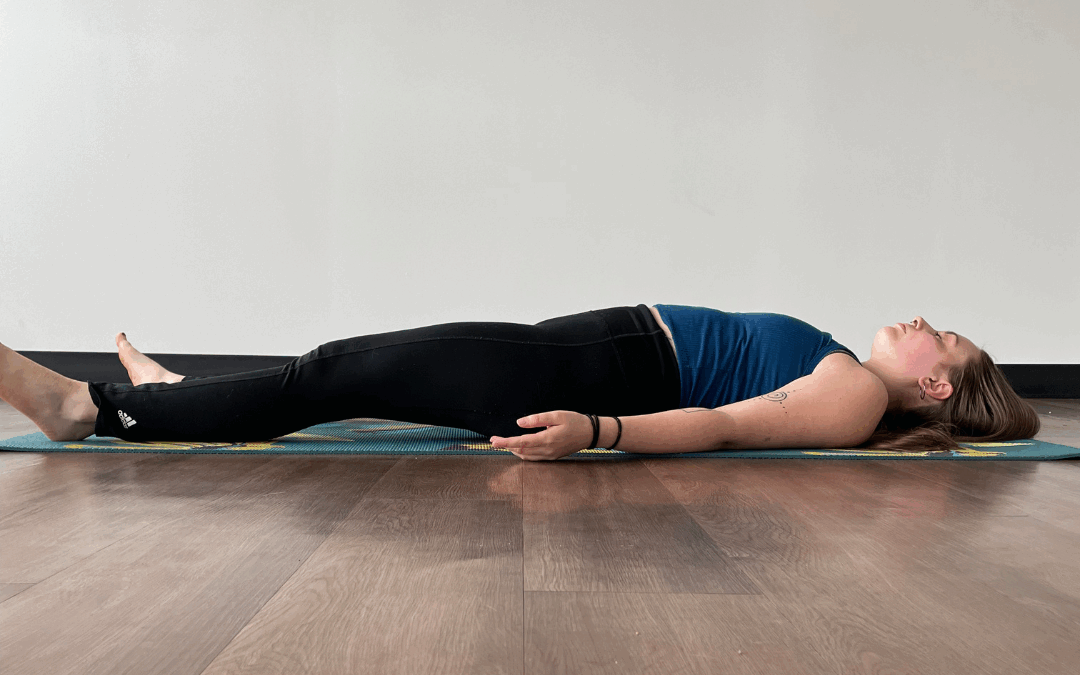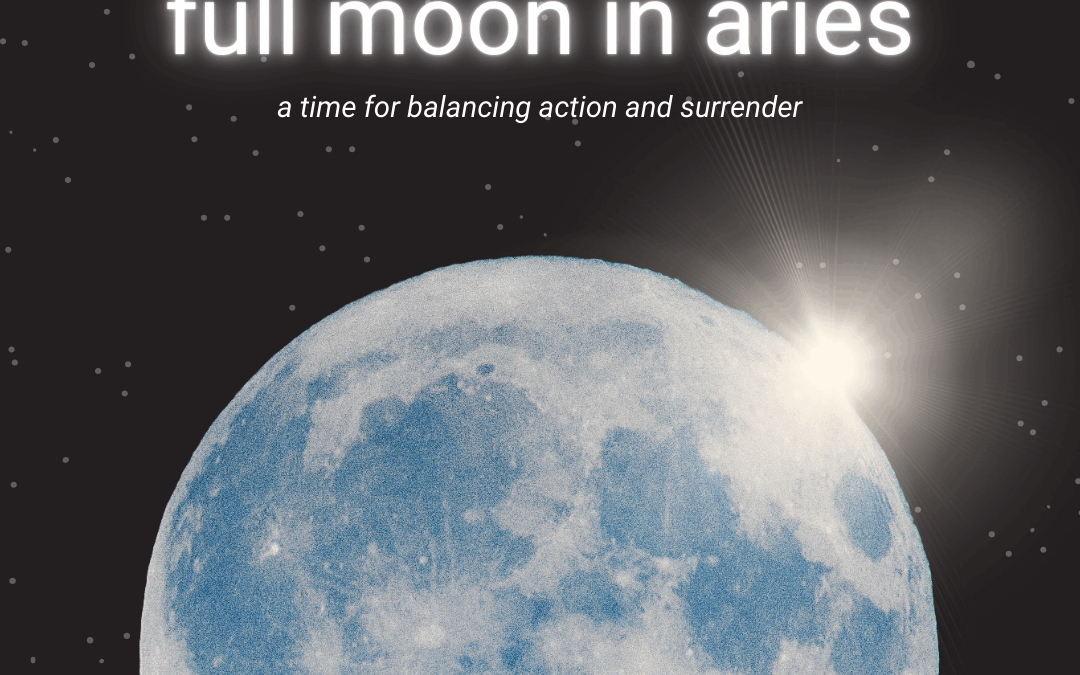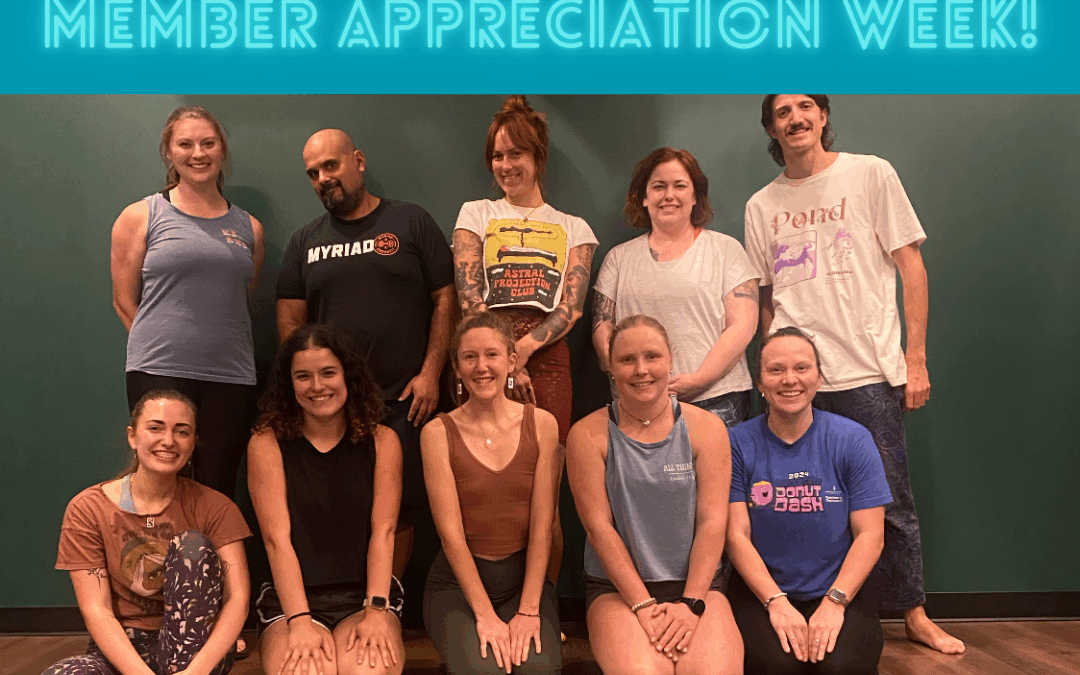“In the space between chaos and shape there was another chance.”
– Jeanette Winterson
Weekly Focus: Bardo (transitional state between death and rebirth)
From the Tibetan Buddhist tradition, bardo is a transitional state between life and death, or between incarnations. This space provides a teaching of renewal and rebirth, amidst difficult transition and challenging struggles. Bardo helps us remember that the sun will always rise again.
This quote from Kino McGregor explains bardo well: “Teachings on the bardo from the Tibetan Buddhist tradition are usually understood to refer to the space between incarnations, in between death and birth, where the mind is untethered from its previous associations with body, identity and ego. In this space, the mind goes wild and the emotions run vast cycles between extremes and peace is hard to find. But, hidden in this teaching is the hope for renewal, rebirth and regeneration as well guidance for staying the course through mental, emotional and other difficulty. “
There are times in our life when we can feel out of control, and we may experience vast swings in our capacity to cope, to mange emotion, and to even feel successful with everyday activities. This teaching, and the practice of yoga, remind us, that it is OK, we will find a space of reawakening on the other side.
Yoga isn’t about completing every yama and niyama, very posture, every teaching perfectly every hour of every day, it’s about the practice or the intention and the recognition behind the practice. If we can look at challenging transitional spaces in our life as opportunities, we may come out feeling stronger and more resilient on the other side. Leaning into discomfort and remembering that this too will pass, is the guiding light that takes us through the unexpected and often uncontrollable chaos that is living a human life. In Yoga, we don’t try to control our circumstances, rather, we work to manage them in the healthiest and most intentional ways possible.
Here is a simple practice in leaning into chaos:
- Explore your emotions — when you find yourself rapidly swinging from state to state, give yourself space to explore your feelings. You might journal about what you feel, or even provide a safe space to release a long cry. Whatever you do, don’t ignore them!
- Listen to your body — transitional states of life may often be so noisy that we forget to honor our own needs. Take time to listen to your body and provide space for rest in seasons of change. Going to bed early, taking a nap, or even committing to less activity can be helpful in chaotic times.
- Lean on your loved ones — sometimes when life is changing a lot, we may find ourselves hiding away. While emotional rest is important, we can also find much guidance and support from those closest to us. Don’t deny your loved ones the opportunity to hold you up.
Passive Pose of the Week: Ardha Matsyendrasana (Half Lord of the Fishes pose)
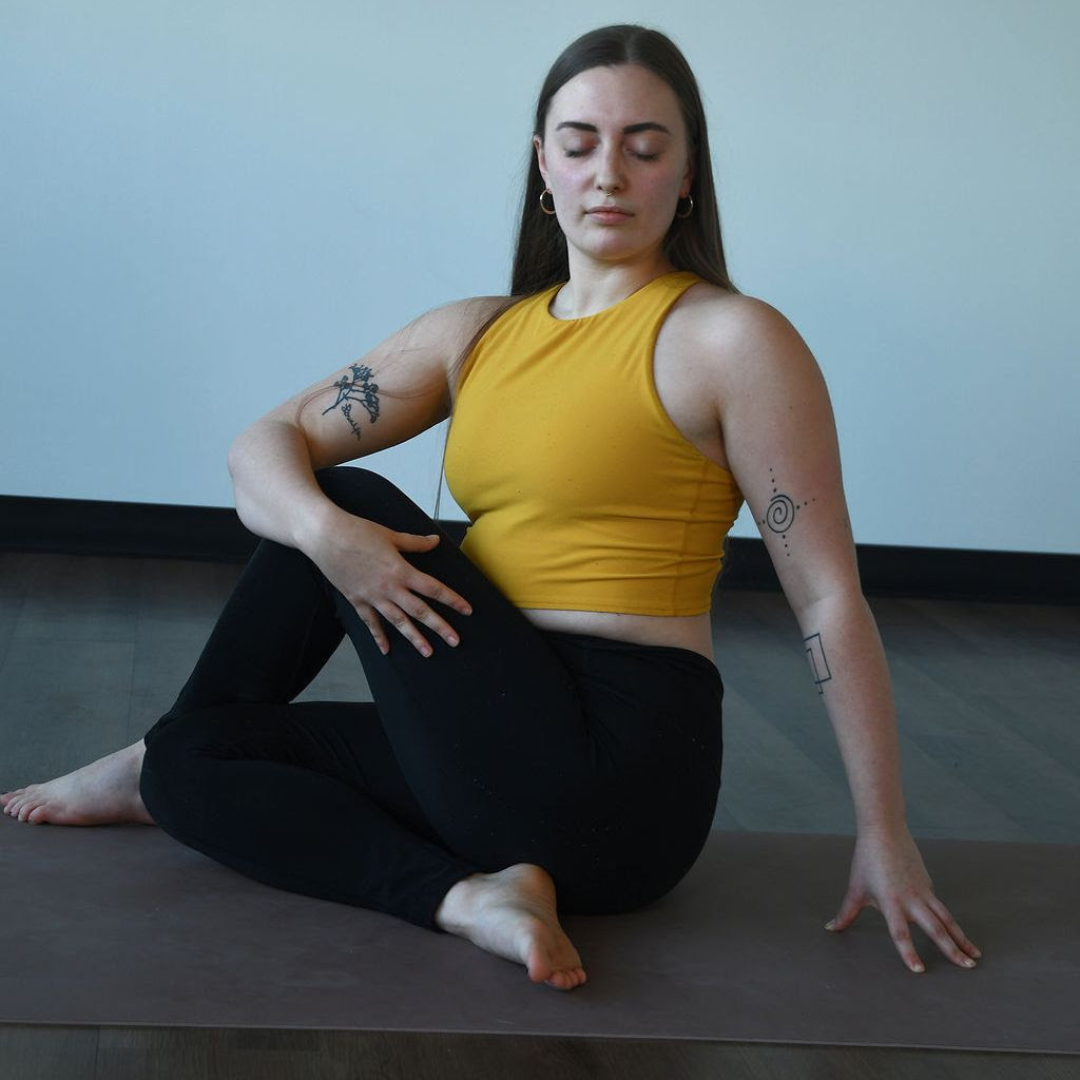
The story of Matsyendra offers a great example of challenge, transition, and the patience required to find flow with discomfort. It is also a reminder that even amongst the most unexpected and unlikely circumstances, we can still find hope on the other side. Matsyendra was one of the founders of Hatha Yoga, and author if the Hatha Yoga Pradikipa. This pose is named for Matsyendra:
“Classical texts state that Matsyendra was born at an inauspicious time which was believed to be an ill omen responsible for bringing bad luck to his parents. Hence, he was thrown into the ocean. In the ocean, he was swallowed by a fish and lived inside it for many years. One day, he happened to be swimming near the riverbank where Shiva was imparting the secrets of Yoga to his spouse, Parvathi.
Having gained yogic knowledge, Matsyendra practiced the yogic sadhana inside the fish for many years. The story goes on to say that one day Shiva noticed the size of the fish, and having heard the entire story from Matsyendra, chose him to disseminate the yoga knowledge to the world. He transformed the giant fish into a man, and the man came to be known as Matsyendranath.”
- Begin sitting on the floor with the legs straight out in front of you.
- Draw the right knee into the chest and step the foot over the left leg.
- Roll on to your left hip slightly, and bend the left knee so that the heel of the foot comes towards your seat.
- Hug your right knee with the left elbow, and begin to gradually rotate the spine into a twist.
- As you do, the right arm can press into the floor behind you, acting as a support.
- Hold for 5 – 7 breaths before untwisting and switching sides.
If you haven’t tried this pose near a wall, we recommend you do!! There are a few interesting variations to try that can help you feel more extension and rotation in this pose. 1) When seated in the twist, adjust yourself so that you twist away from the wall and let your back lean into the wall slightly. 2) Now try rotating your whole setup to face the wall. Twist towards the wall and use your hands on the wall to help lift up and square your shoulders to the wall. 3) Now combine the two! Sit in corner space so that your back is supported by the wall behind you, but you can still rotate and twist towards the wall. Notice how each variation is a little different and might support the other.
Active Pose of the Week: Water Salutation
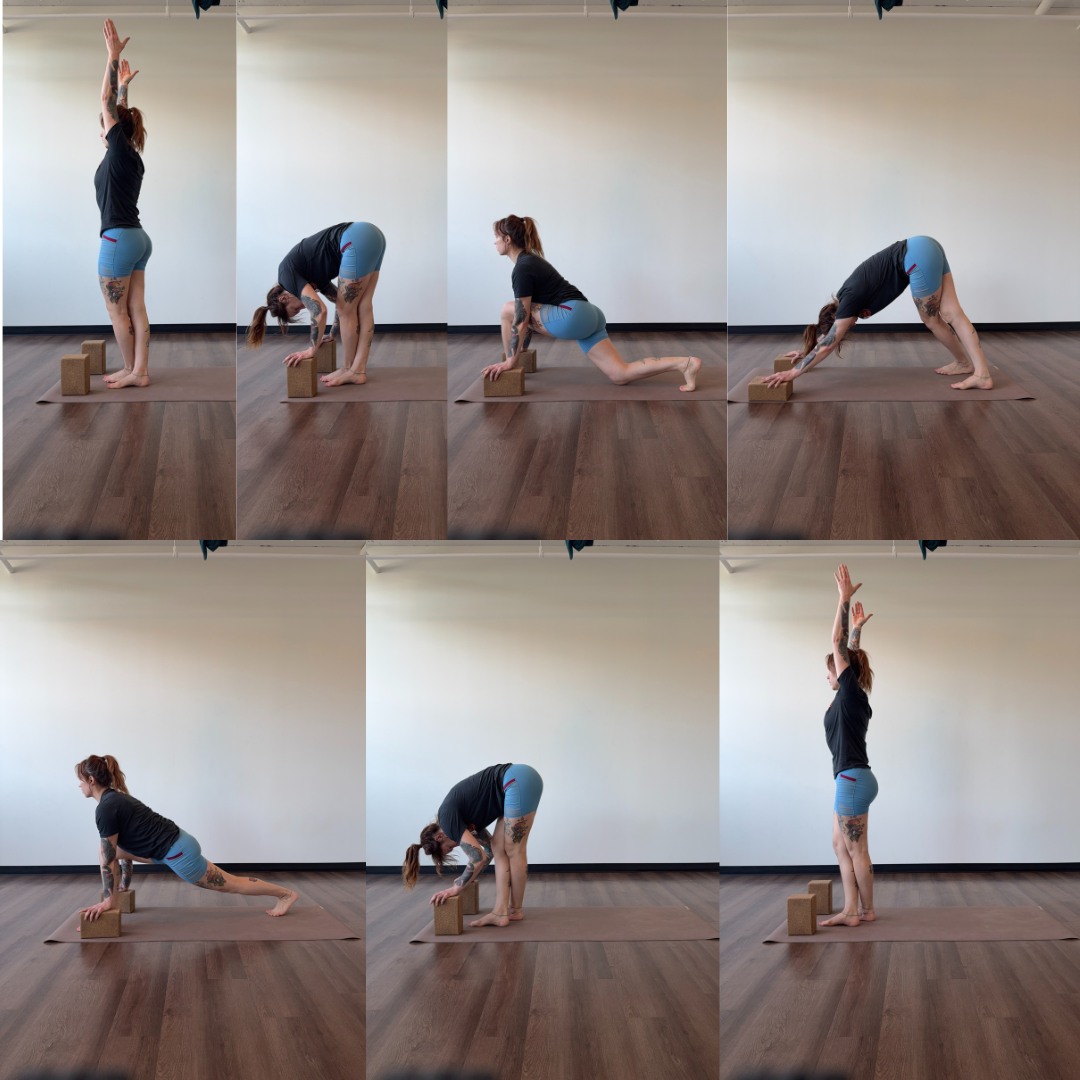
Our poses each week this month have all been prepping us for a Water Salutation! Water Salutations are twisty, lunge-y, hippy and soft. These salutations help us tap into the nature of water. Let the fluidity of water help us find more flow and adaptability in the spaces between.
- Begin in a standing Mountain pose (tadasana).
- Step your right foot behind your left so that your legs are in a criss cross position. Inhale and reach your arms overhead, exhale and fold.
- Inhale and step your right foot to the back left edge of your mat. Drop the right knee down like a low lunge. Exhale and step your left back in front of the right leg, for a downward dog with criss cross legs.
- Inhale, uncross your right leg, and step it to the top left corner of the mat. Bring your left knee to the ground. Exhale and step the left foot forward, behind the right left.
- Inhale to rise, reaching arms overhead. Exhale your hands to your side.
- Complete these salutations crossing and uncrossing the legs as you go.
Water Salutations can get a little confusing at first go-through, however once you find your pattern and rhythm, there is a lovely flowing sensation about them. Try not to think too hard but just let the postures flow from one to the next.
Join us in class this week to practice engaging with bardo. See the full schedule HERE.
To get weekly updates from our parent brand, Myriad Fitness + Yoga, follow our weekly podcast “For Time.

